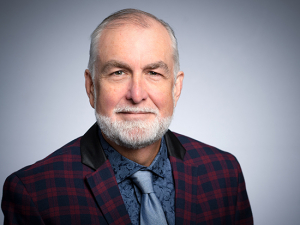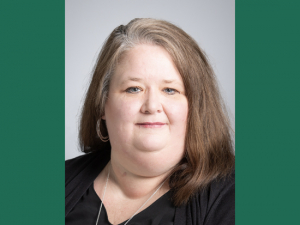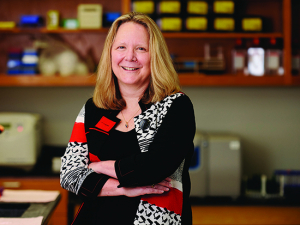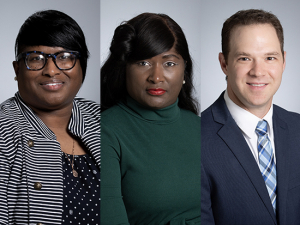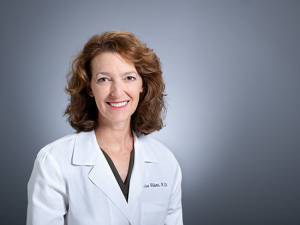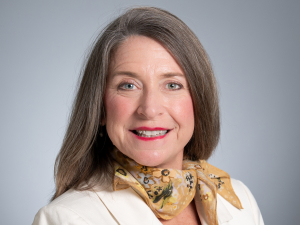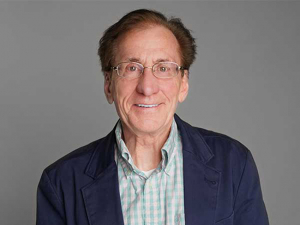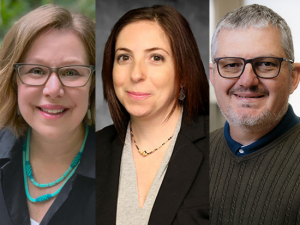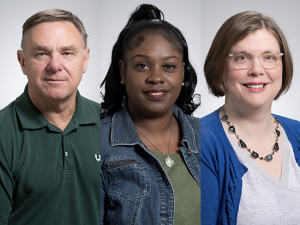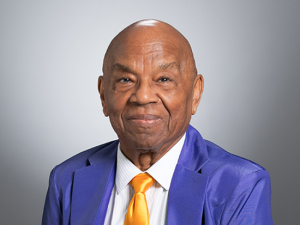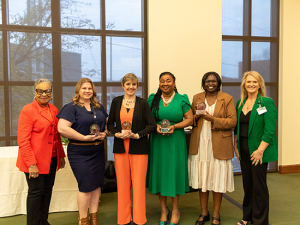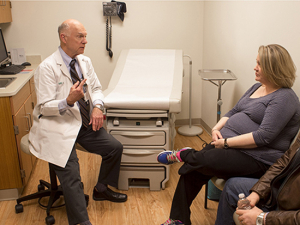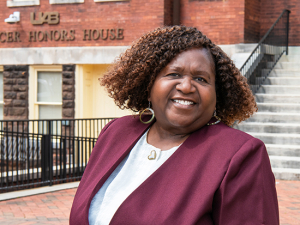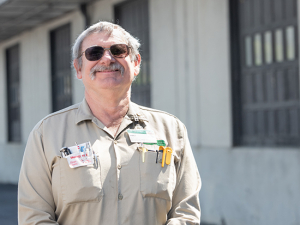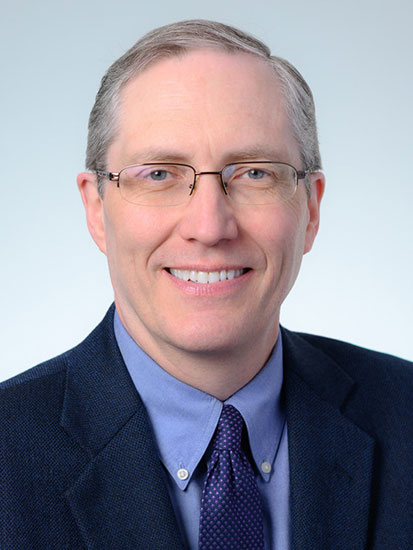 Gregg Gilbert, DDS, Distinguished Professor and chair of the Department of Clinical & Community Sciences, will present the Distinguished Faculty Lecture Feb. 11.The man who is quite possibly the most funded investigator in the annals of oral health research, and certainly the recipient of the largest federal grant in UAB history, began his career with a simple question: Do you have any jobs for people like me?
Gregg Gilbert, DDS, Distinguished Professor and chair of the Department of Clinical & Community Sciences, will present the Distinguished Faculty Lecture Feb. 11.The man who is quite possibly the most funded investigator in the annals of oral health research, and certainly the recipient of the largest federal grant in UAB history, began his career with a simple question: Do you have any jobs for people like me?
At the time, Gregg Gilbert, DDS, was finishing undergraduate classwork at the University of North Carolina at Chapel Hill in the semester before he started dental school. But he already was eager to get going in research. “I ended up washing laboratory glassware,” said Gilbert, Distinguished Professor and chair of the Department of Clinical & Community Sciences in the School of Dentistry. His question marked the start of a research career that accelerated quickly. While in training, “I did tissue-culture research with a dental school faculty member who mentored me, then did animal research with a different faculty member,” Gilbert said. But he never lost his feel for the practical aspects of research.
Practical science for the real world
During the past 20-plus years, Gilbert has advanced scientific frontiers and contributed to better health worldwide by connecting thousands of practicing dentists with university researchers. That has helped spread evidence-based treatments for everything from root canals to dentin hypersensitivity and highlighted the value of preventive treatments such as topical fluoride for cavity prevention. “Much of what we had done in dentistry did not have a strong scientific basis — it was based on clinical observation,” Gilbert said, pointing to a previous emphasis on surgical approaches. “We thought we were acting in the best interests of patients. But research has shown that more conservative intervention and getting the patient involved in the treatment can lead to better outcomes long-term.”
“His idea was to build upon clinicians’ observations from their own practices, get them engaged in discussions with other practitioners about scientific approaches and then establish scientific consensus that is clinically meaningful and relevant to patient treatment,” said School of Dentistry Dean Russell Taichman, DMD, DMSc. “Essentially, it is practical science done for the benefit of real world clinical practice.”
This work has earned Gilbert an invitation to deliver the annual Distinguished Faculty Lecture, the highest honor bestowed by the Academic Health Center on a faculty member who has advanced the frontiers of science and made outstanding contributions to education, research and public service. Gilbert will deliver an invitation-only lecture 6 p.m. Feb. 11 and receive a $5,000 stipend.
Engaging expertise
Crucially, Gilbert didn’t see the link between researchers and clinicians as only going one way. He has shown that dentists in practice can be equal collaborators, bringing forward vital study topics and contributing to overall health. Dentists in his studies have identified patients interested in quitting smoking, and with elevated blood glucose levels and blood pressures, and connected them to care. “There is a tremendous amount of expertise out in the community, but it had been ignored,” Gilbert said. “We engaged that expertise, and it has been an important part of the picture.”
Beginning with a few hundred dentists in northern Florida, Gilbert built several regional practice-based research networks. Then, in 2012, he received a seven-year, $66 million-plus grant from the National Institutes of Health to take his vision nationwide with the National Dental Practice-Based Research Network (National Dental PBRN). The grant was renewed for seven years with a $22.4-million extension in 2019.
| “His idea was to build upon clinicians’ observations from their own practices, get them engaged in discussions with other practitioners about scientific approaches and then establish scientific consensus that is clinically meaningful and relevant to patient treatment. Essentially, it is ‘practical science’ done for the benefit of ‘real world’ clinical practice.” |
The roots of the PBRN began in 1998 with an NIH-funded project called the Florida Dental Care Study. The project was initially focused on tooth loss and involved interviews and clinical examinations on 873 randomly selected adults in northern Florida. But “we felt we should be able to broaden the scope of the study, to include other things that we felt should be investigated, such as how dental diseases and conditions change over time,” Gilbert said. That information was contained in participants’ dental records, so Gilbert went to the dental practices serving those patients. Nearly all of the 286 practices that Gilbert contacted were willing to participate. Many of the dentists, without being asked, said they would be willing to participate in future studies, too. “They appreciated being asked, and they had a lot of important expertise to offer,” Gilbert said.
The Florida Dental Care Study eventually was supported by seven NIH grants over a decade and led to 75 peer-reviewed scientific publications.
In 2000, Gilbert moved to UAB, bringing with him a vision to create a network of community practitioners as partners in research. In 2002, he applied for and received an internal grant from the UAB Health Services Foundation to begin a PBRN in Alabama, which quickly grew to become the Alabama Dental PBRN, the nation’s first statewide dental PBRN, with several hundred dentists enrolled.
By 2005, Gilbert was able to expand nationally and internationally with The Dental PBRN, funded by a $25 million NIH grant, which engaged more than 1,000 dentists in the United States and internationally, from a diverse range of practice types, including both general dentists and specialists. The Dental PBRN, at Gilbert’s instigation, intentionally and systematically expanded the roles of dental hygienists in its studies to act as full-scale practitioner-investigators in three of its studies.
| “There is a tremendous amount of expertise out in the community, but it had been ignored. We engaged that expertise, and it has been an important part of the picture.” |
Gilbert’s practice-based research vision culminated with the National Dental Practice-Based Research Network, launched in 2012. The National Dental PBRN includes six regional centers, based in Alabama, Florida, Minnesota, Oregon, New York and Texas, along with coordinating centers in Maryland (2012-2019) and Oregon (2019-2026). More than 6,000 practitioners have joined the network, which has conducted 38 studies and published 160 peer-reviewed scientific journal articles. The National Dental PBRN also has achieved international reach, sparking networks in Scandinavia, Japan and Brazil and serving as “a good model for other networks to get things going and engage practitioners in their country in research,” Gilbert said.
Breaking down silos
Another “component of Dr. Gilbert’s vision was to have every graduating student appreciate the importance of science in everyday clinical practice,” Taichman said. Because of UAB’s status as the state’s only dental school, that means the vast majority of Alabama dentists graduate with this appreciation. Of the roughly 1,900 dentists currently practicing in Alabama, some 80 percent were trained at UAB. “We’re helping students understand that there is a scientific basis for what we do in everyday clinical care and develop an appreciation of the overlap between evidence and what the patient wants and needs,” Gilbert said.
Gilbert also expanded the School of Dentistry’s clinical rotations for students to include more external sites. He created a new position, director of Community Collaborations, to expand the rotation pool to include community health centers and other sites that serve high-disease populations. “An additional component is that most of these dental clinics are at sites that also provide medical care — an important segue for PBRN studies that investigate topics in the medical/dental overlap, and to provide a context for inter-professional collaboration,” Taichman noted.
Gilbert said inter-professional collaboration among medicine, dentistry and nursing professionals, breaking down the traditional silos between fields, represents the future of care. “Ultimately, we’re going to conclude that patients are better off for it,” he said.
| “We may be in the midst of an evolution of dentistry’s role in the health care system. There is a certain segment of the population that will show up in a dentist’s office but not come for medical care; there is an opportunity here to screen, identify and connect people with care.” |
The National Dental PBRN has demonstrated the feasibility of blood glucose and blood pressure screening as part of regular dental practice. “We’re not diagnosing anything,” he said. “We always take blood pressures before extracting a tooth. That may identify a problem, and we should refer that.” Diabetes is not a part of routine care now, “but it may be,” Gilbert added. “It’s easy to do a finger stick to measure blood glucose or HbA1C.” In a PBRN pilot study “we identified a certain percentage of people who obviously had a problem. We’re not going to ask people to fast, but even if they’re not fasting we can note something abnormal if they have unusually high levels.
“We may be in the midst of an evolution of dentistry’s role in the health care system,” Gilbert said. “There is a certain segment of the population that will show up in a dentist’s office but not come for medical care; there is an opportunity here to screen, identify and connect people with care. The mouth can be a mirror of the body at large.”
Gilbert sees a potential expansion of the scope of practice in dentistry, pointing to a new law in Oregon that allows dentists to give vaccinations. “The patients are already there,” Gilbert said. “It’s not rocket science to give a vaccination. Dentists are very good at giving injections. We know how to do that.”
235 and counting
| “I’ve always aimed to foster a team-science perspective and a respect for other people’s contributions. And people are willing and interested in collaborating.” |
With 235 peer-reviewed scientific publications — and counting — generated from the practice-based networks he has led and a total of more than $117 million in NIH funding as principal investigator, Gilbert “has transformed the dental profession” and “made significant contributions to the health of our nation,” Taichman said. Gilbert received the Distinguished Scientist Award from the International Association for Dental Research in 2002 and the William J. Gies Award from the American Dental Education Association in 2012. In 2018, he was named to the rank of Distinguished Professor at UAB.
“Dr. Gilbert’s vision has changed the oral health research model by bringing practitioners, student dentists, clinical staff and patients to the discussion table — end-users who have an immense amount of practical knowledge and wisdom that previously had been largely ignored,” Taichman said.
Gilbert’s studies have generated so many noteworthy findings over the years that he declines to choose favorites. “To me, the key finding is that we’ve been able to reach out to investigators on such a broad range of topics,” he said. “I’ve always aimed to foster a team-science perspective and a respect for other people’s contributions. And people are willing and interested in collaborating.”

